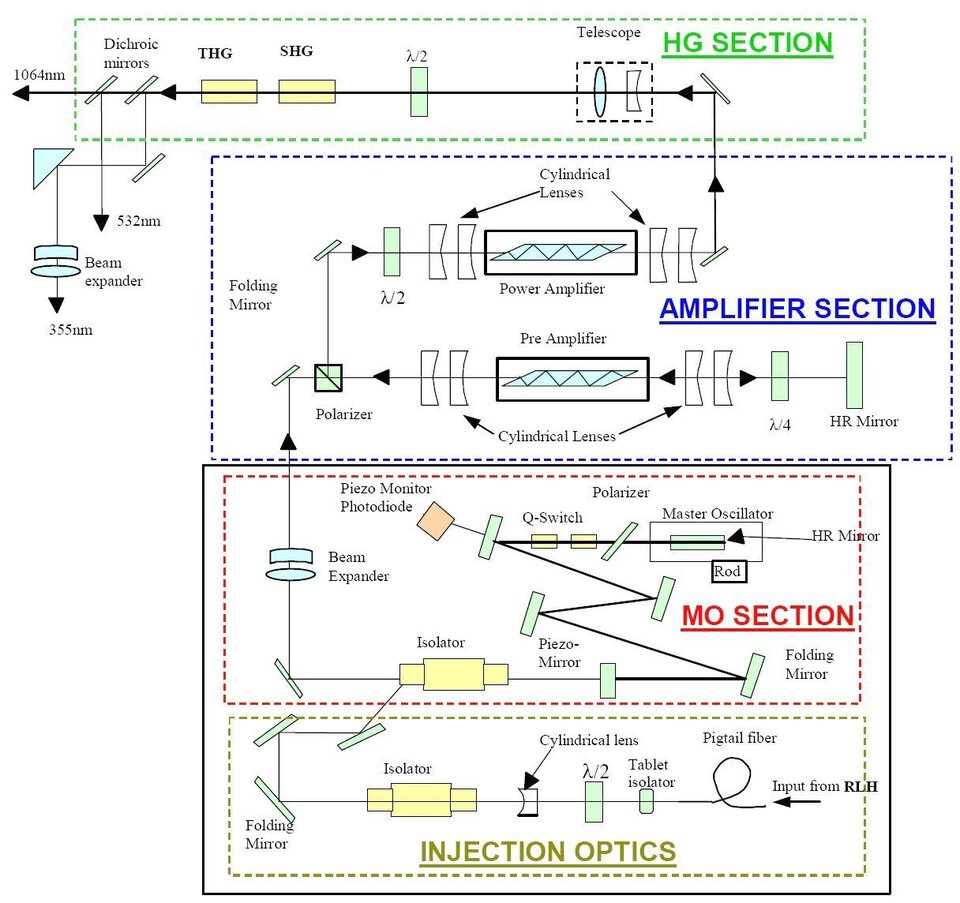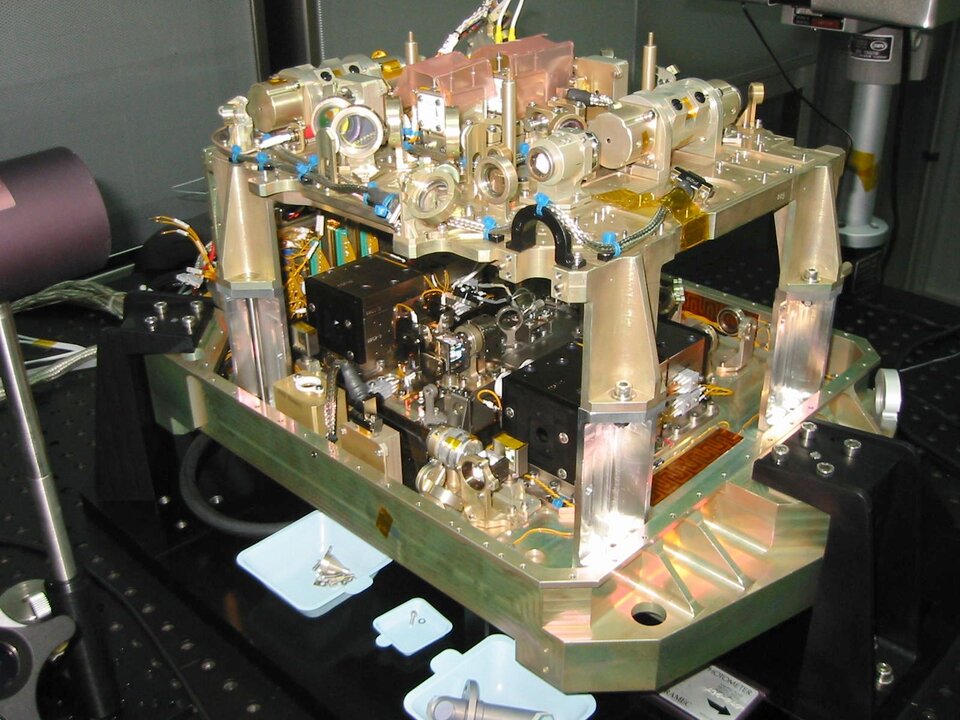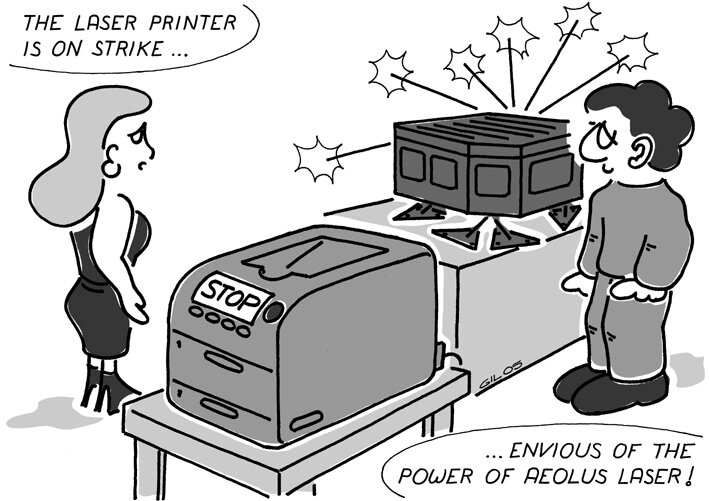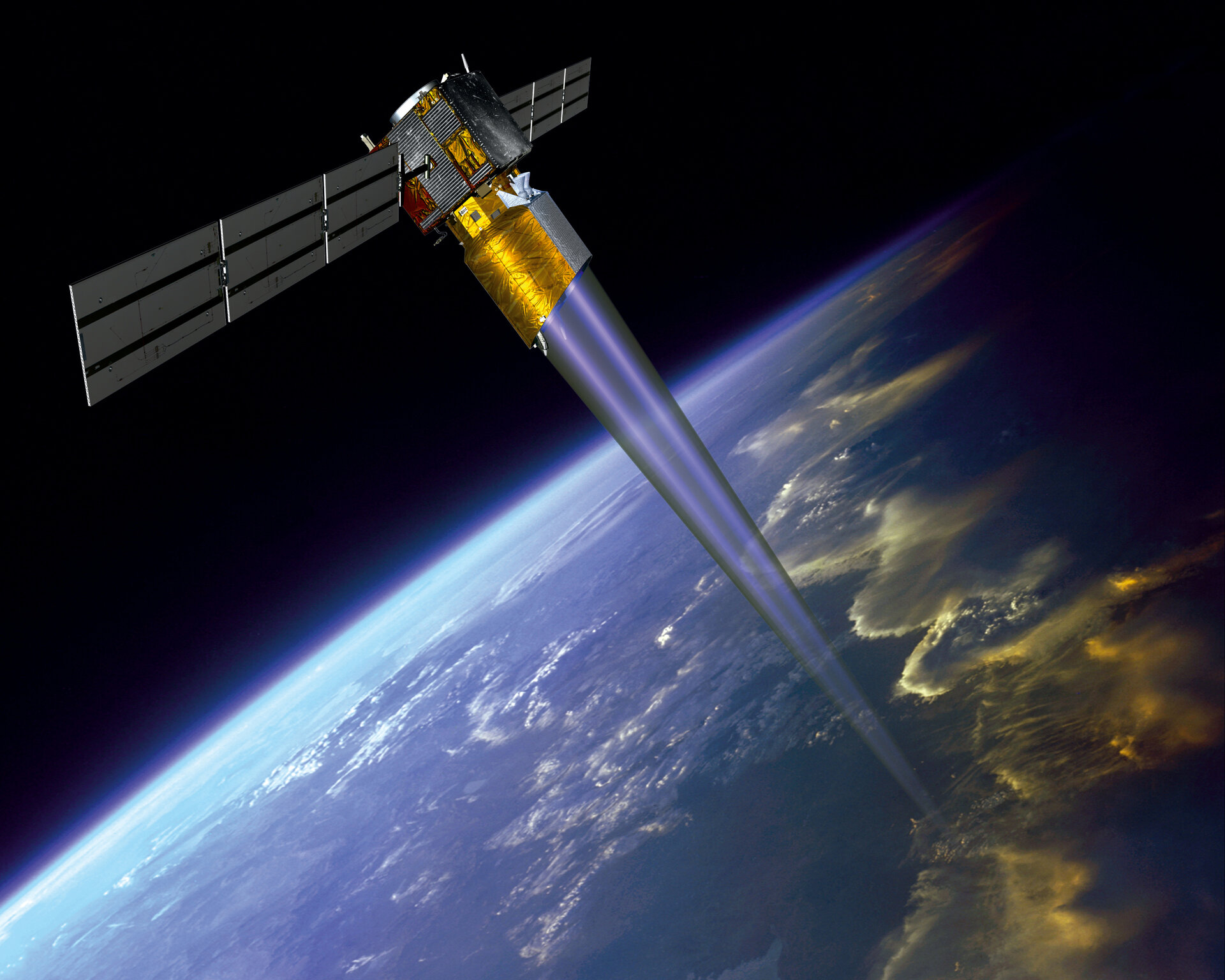ADM-Aeolus laser bursts into life
A major milestone has just been reached in the ADM-Aeolus project as the transmitter-laser prototype emits its first light pulses in ultra-violet. The laser forms the heart of Aeolus's innovative ALADIN payload and since it is a completely new instrument, these first light pulses signify a technological breakthrough.
ALADIN stands for Atmospheric Laser Doppler Instrument and its transmitter laser is the first high-power UV-laser system that will operate in space over a long period of time. This laser has to generate powerful light pulses in the ultra-violet (355 nm) with short busts of high power at about 5 MW(which becomes completely eye-safe when transmitted over 500 km to Earth). The laser emits 100 light pulses per second, so throughout the three-year mission several billion light pulses will be generated. It has now been proven that the laser is functioning; however, further development steps need to be taken to realise the full laser system.
Due for launch in 2008, ESA's wind mission ADM-Aeolus, often referred to as just 'Aeolus', is the fourth Earth Explorer mission to be developed within ESA's Living Planet Programme. Aeolus will be the first-ever satellite to directly observe wind profiles from space. Demonstrating new laser technology, this mission aims to improve the quality of weather forecasts, and to advance our understanding of atmospheric dynamics and climate processes.
The Aeolus laser assembly is actually a complex system of various individual laser sources and numerous optical components. The emission frequency is determined by a small continuous laser source that is formed by a small optical crystal (Neodymium-doped Yttrium-Aluminium Garnet, or Nd: YAG) and a laser diode to optically pump the crystal. The laser emits a well-defined frequency in the infrared (1.06 micron wavelength), which can be controlled very precisely. The light from this laser is guided in an optical fibre to the power laser head, which forms the high-powered pulses.

The central unit in the power laser head is a laser oscillator that forms the short light pulses in the infrared spectral region. This light pulse is amplified in a chain of two Nd:YAG amplifiers. Each of these amplifiers is pumped optically by eight laser diode arrays, each of which has 12 laser diode bars with 69 individual laser diode emitters. An individual laser diode emitters is comparable to a laser used in a laser printer; thus the power laser head actually has the same as the power as that of about 15,000 individual lasers!

After amplification, the light pulse reaches high power in the infrared. To work for the Aeolus mission, this light pulse has to be converted into the ultraviolet spectral region (355 nm wavelength). This is done by two non-linear Lithium-Borate (LBO-) crystals. These two crystals transform about 30 % of the infrared pulses into useful UV pulses; the residual power is absorbed in the laser head.
Despite the description of the Aeolus laser assembly appearing somewhat complex, the real implementation is decidedly more difficult. This is because there are various constraints to overcome such as the need to cool the active elements, the high pointing stability required, the sturdiness needed to withstand the launch, and how to monitor all the critical parameters to facilitate remote operation over years of operation.

The laser system is being developed by Galileo Avionica (Italy), and their subcontractors CESI (Italy), Quantel (France), Thales Laser Diodes (France) and TESAT (Germany) with EADS Astrium as the overall Prime Contractor for the Aeolus mission. After some breadboarding activities, full-scale development started in 2002. Many obstacles had to be faced during the development and design work, which lead to some 500 drawings being produced. Finally, manufacturing started at the end of 2004 and after about 3 months of integration procedures, the first prototype of the power laser head is now ready. The emission of the first light pulses in the UV completes the first test phase of the prototype laser head.
However, there are still many challenges to be faced. The Aeolus transmitter laser will operate in space and therefore in a vacuum. This requires the selection of fully vacuum-compatible components for the laser, as well as research into various areas related to the damage of optical components in vacuum conditions. Experiments will be carried out on the prototype laser, as well as on test equipment operated in various European laboratories involved in the development research programme. The first laser operation in a vacuum is expected before the end of 2005.

One of the reactions to this major milestone for the Aeolus project is that several other ordinary lasers in printers, CD players and so on are jealous and have refused to function – at least according to ESA's Aeolus engineer and cartoonist Gilles Labruyére!





